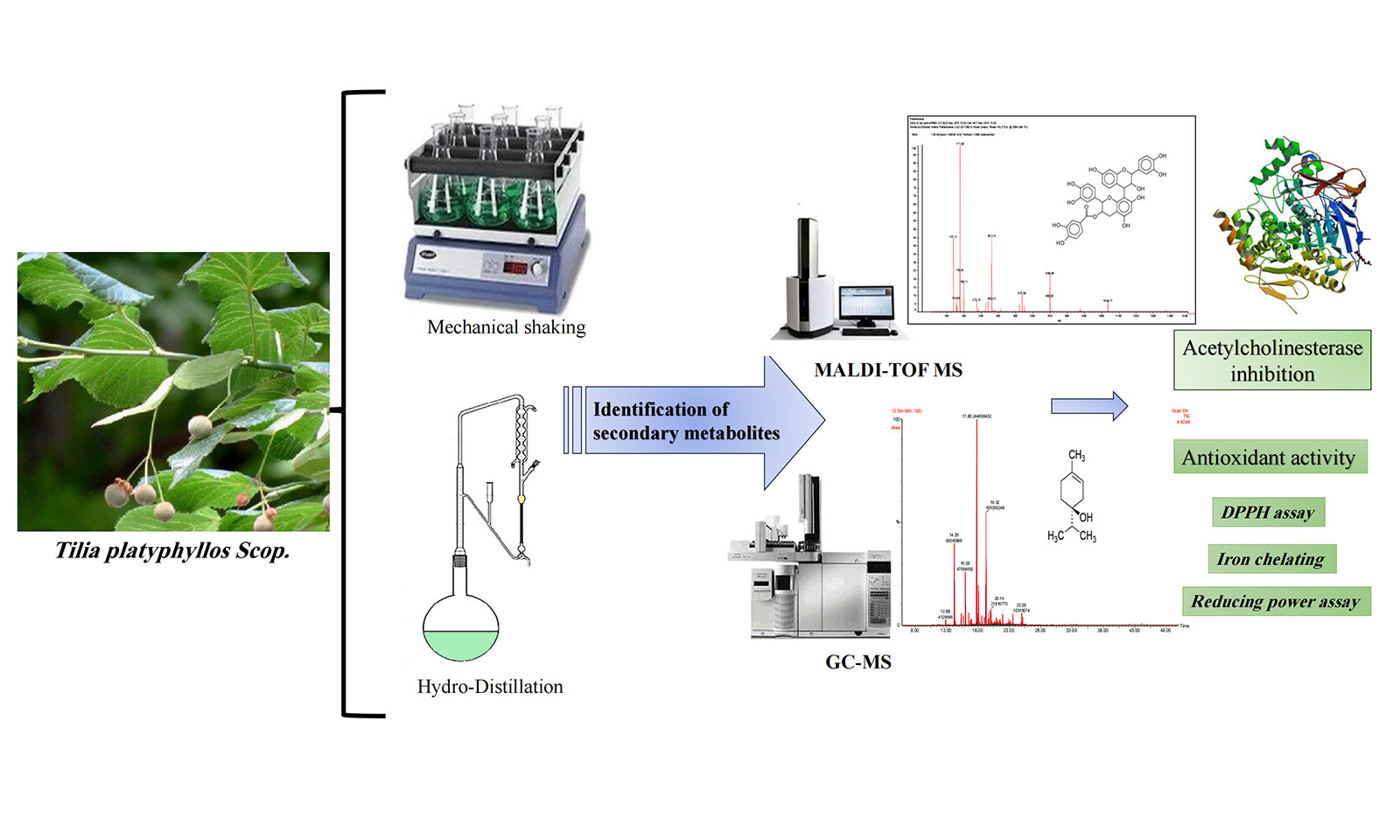 Open Access
Open Access
ARTICLE
Identification of Secondary Metabolites in Tunisian Tilia platyphyllos Scop. Using MALDI-TOF and GC-MS
1 University of El-Manar II, Faculty of Sciences, Plant, Soil, Environment Interactions Laboratory, Campus Academia, Tunis, 2092, Tunisia
2 LERMAB, University of Lorraine, 27 Rue Philippe Seguin, Epinal, 88000, France
* Corresponding Author: Antonio Pizzi. Email:
(This article belongs to the Special Issue: Special Issue in Celebration of JRM 10 Years)
Journal of Renewable Materials 2024, 12(4), 827-842. https://doi.org/10.32604/jrm.2024.046950
Received 20 October 2023; Accepted 12 January 2024; Issue published 12 June 2024
Abstract
This study is the first to evaluate the phytochemical content and biological properties of Tunisian T. platyphyllos Scop. A total of 23 compounds of essential oils were identified by gas chromatography-mass spectrometry (GC-MS) analysis of bracts and fruit extracts. The results show that oxygenated monoterpenes were the dominant class of essential oils. The phenolic composition was investigated by matrix-assisted laser desorption/ionization-time of flight (MALDI-TOF). The analysis showed that the chemical profiles of the ethanolic extracts of bracts and fruits are substantially similar. The highest polyphenol content was found in the ethanolic extracts of the fruits (7.65 mg gallic acid equivalents (GAE).g on dry weight (DW). As for the antioxidant capacity, it was recorded in the essential oils of the fruits (IC = 0.91 mg.mL). The results obtained showed that the antioxidant activity of the fruit essential oil was higher than that of the ethanol extract. The fruit essential oil was also found to have the highest reducing power (IC = 0.67 mg.mL). In terms of iron-chelating power, fruit essential oil has the highest chelating power (IC = 2.03 mg.mL). Compared to the ethanolic extract, the essential oil had the maximum antioxidant capacity. The enzymatic activity of acetylcholinesterase (AChE) inhibition of the essential oil from T. platyphyllos bracts had the most potent inhibitory effect (IC = 0.77 mg.mL), followed by the essential oil from the fruits (IC = 0.95 mg.mL). The results suggest that T. platyphyllos can be used as a potential source of naturally occurring bioactive compounds and antioxidants.Graphic Abstract

Keywords
Cite This Article
 Copyright © 2024 The Author(s). Published by Tech Science Press.
Copyright © 2024 The Author(s). Published by Tech Science Press.This work is licensed under a Creative Commons Attribution 4.0 International License , which permits unrestricted use, distribution, and reproduction in any medium, provided the original work is properly cited.


 Submit a Paper
Submit a Paper Propose a Special lssue
Propose a Special lssue View Full Text
View Full Text Download PDF
Download PDF Downloads
Downloads
 Citation Tools
Citation Tools
